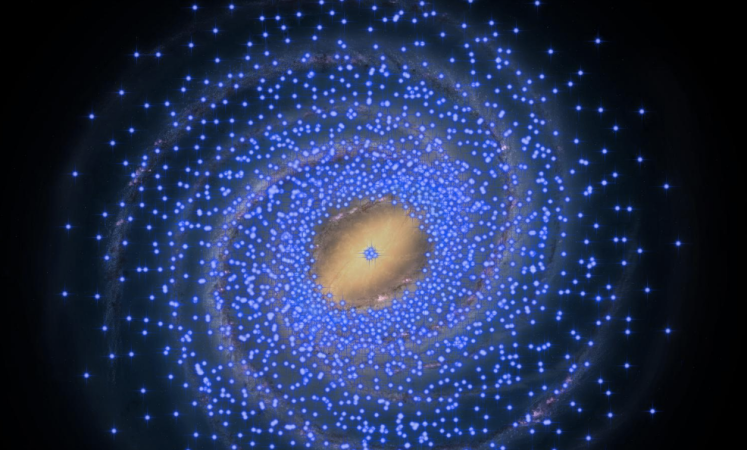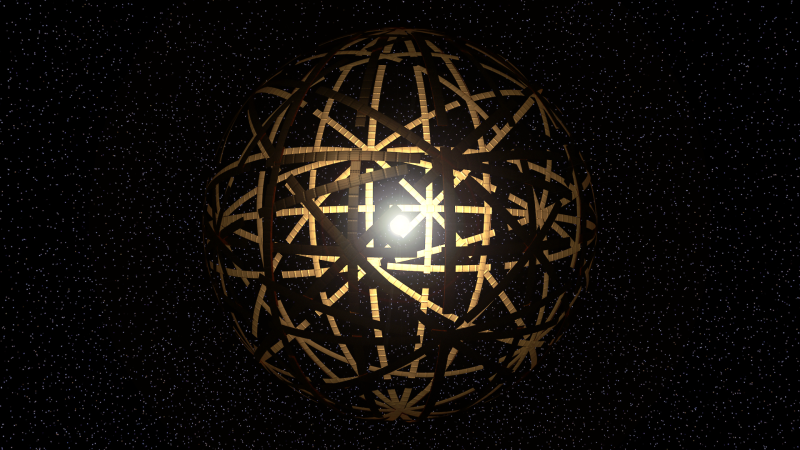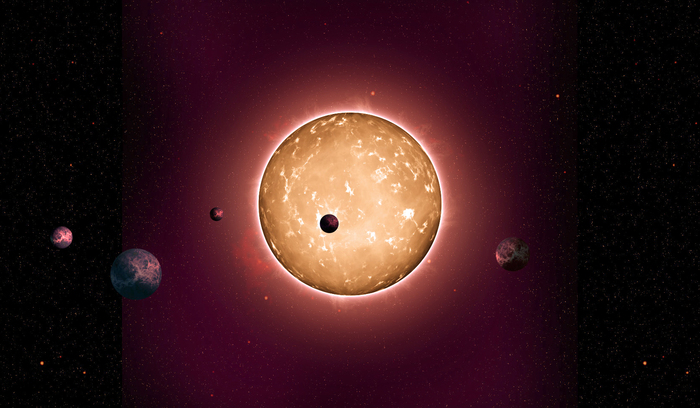

Astronomers theorize that stars and their planets are born when a spinning disk of gas and dust collapses in on itself. But these disks have been hard to detect, because they’re relatively small.
Now, the Atacama Large Millimeter/submillimeter Array (ALMA) in Chile is making it possible to find and study these disks in detail. In a paper in Science Advances, scientists have published one of the first snapshots of a young protostellar disk named HH212—and it turns out it looks like a hamburger.
Gas and dust fall into the center of the disk to feed the young star, which is estimated to be about 40,000 years old—just a baby, by astronomical standards. The disk is about 60 times as wide as the distance between the Earth and sun, and running across its waistline is a dark, cold belt. Because HH212’s top and bottom layers are brighter than its middle, the researchers are (rightfully) comparing it to a sandwich.
This is the first time astronomers have spotted this dark equatorial band in a protostellar disk, and it “poses a big challenge on some current theories of disk formation,” says Chin-Fei Lee, the lead author on the study. Lee is a research fellow at the Academia Sinica Institute of Astronomy and Astrophysics in Taiwan.
The sandwich-like structure appears to arise from the way heat is distributed throughout the disk. HH212’s surface is expected to be warmer due to heating from its protostar and the way winds move around inside it.

“The exciting thing is that we are starting to be able to resolve such disks,” says Ken Rice, a computational astrophysicist at the Royal Observatory in Edinburgh. “In other words, we can start to actually understand the characteristics of these disks.”
Understanding the disks, in turn, helps to reveal the details of how stars and planets form.
Even though this particular disk is young and relatively small, it’s already forming millimeter- or centimeter-size clumps of material that will eventually grow into planets and asteroids. That’s interesting, says Rice, because it “suggests that processes associated with the formation of planets happens when these systems are very young.”
Researchers still want to know exactly how the disk material gets funneled into the center to feed the fledgling star, or how micrometer-sized grains of dust grow into massive planets. Do the centimeter-sized clumps like HH 212’s collide and break apart, or stick together? How quickly do the planetary bodies grow, and how early do they reach full size? “Could we even see them in a system as young as this?” Rice ponders.
Now that scientists can see these young protostellar disks, they can start to tackle some of these mysteries.















